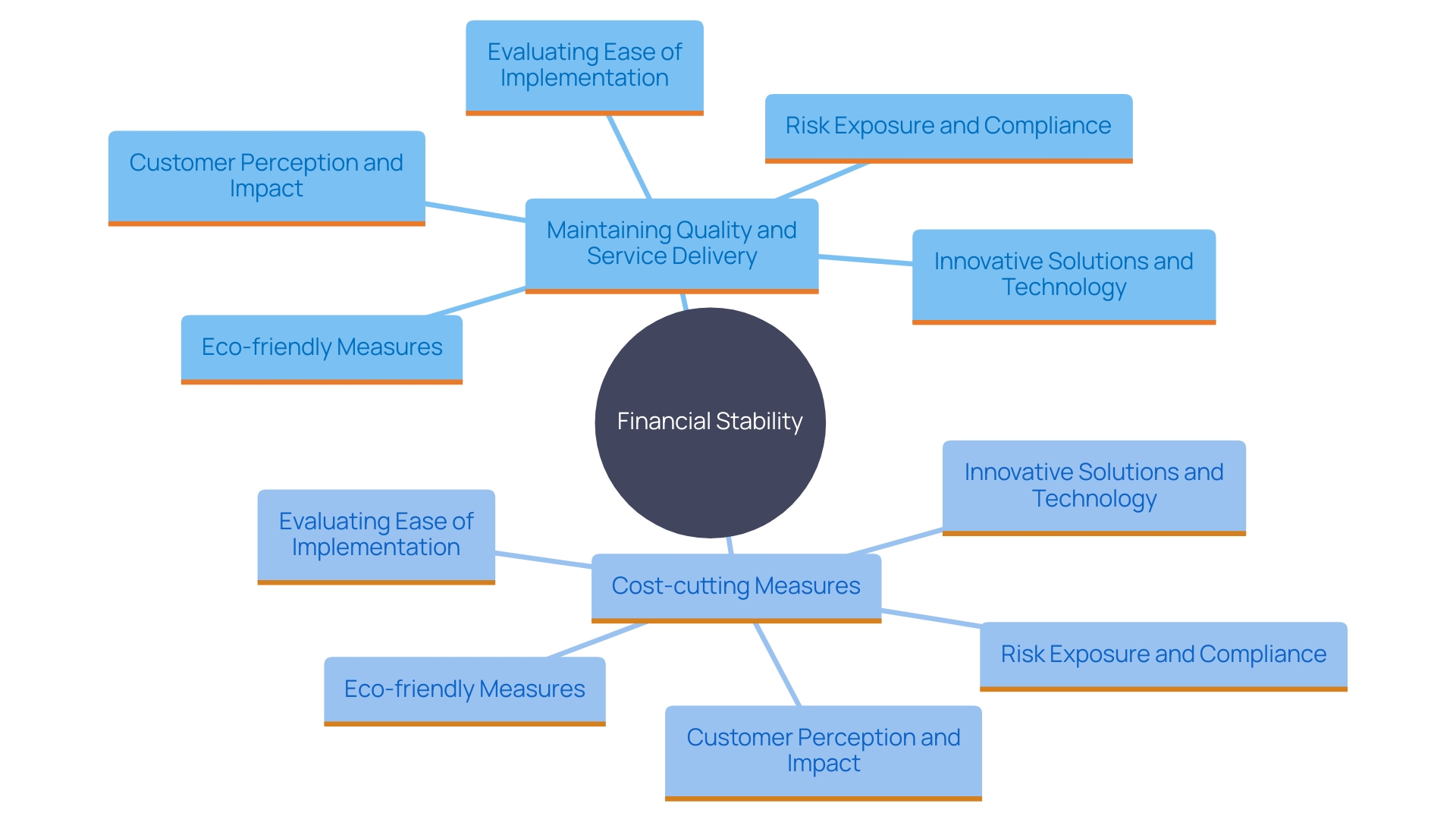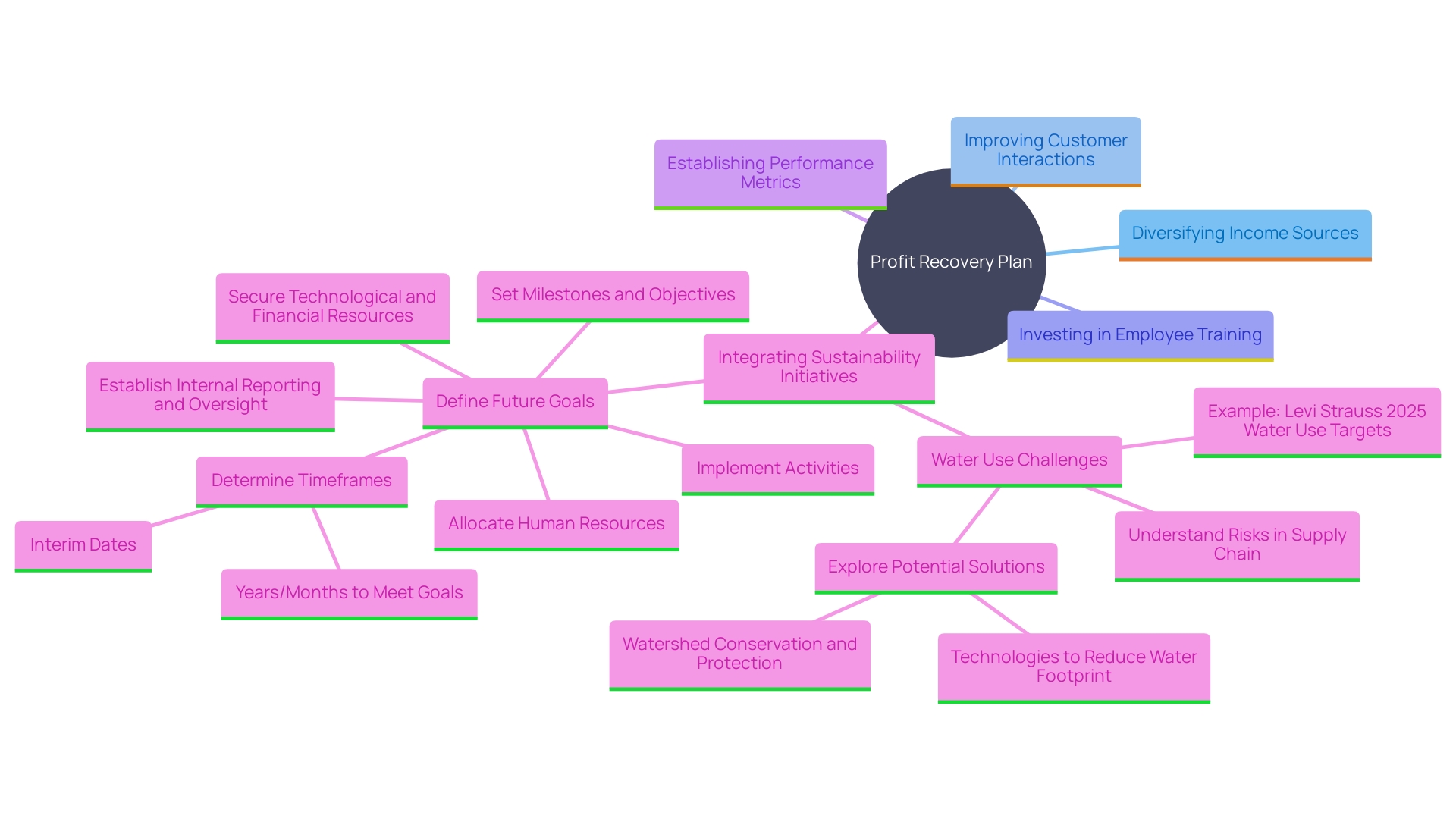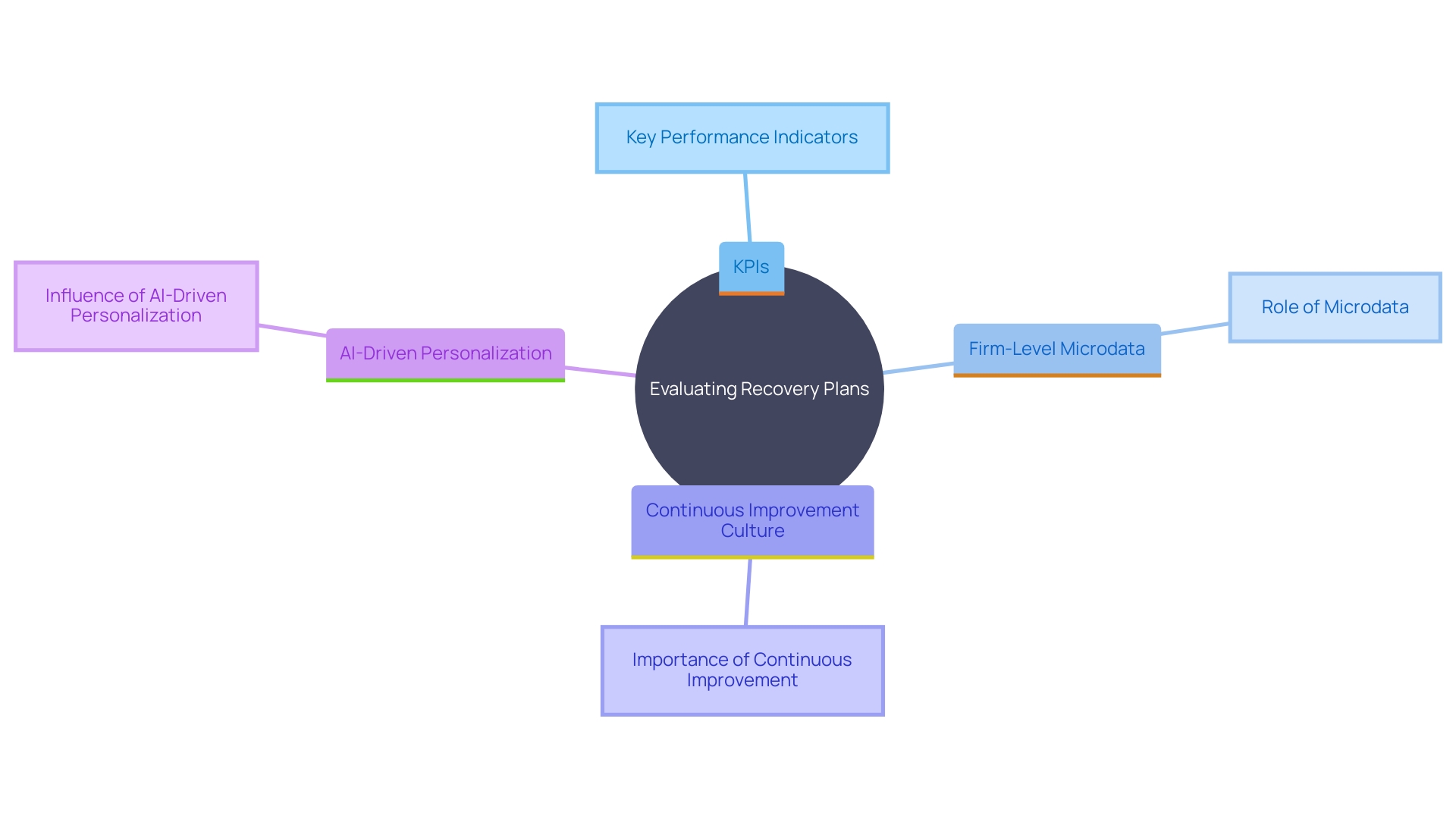Introduction
Navigating the complex landscape of profit recovery requires a keen understanding of both external market forces and internal operational dynamics. In today's volatile economic environment, businesses must employ strategic and data-driven approaches to address profit loss effectively. Initiating a thorough analysis of the economic environment and internal inefficiencies forms the bedrock of a robust recovery plan.
By leveraging comprehensive financial audits and targeted operational improvements, organizations can identify and rectify the root causes of their financial distress.
Immediate turnaround strategies, such as cost-cutting measures and optimizing workforce allocation, are essential for maintaining financial stability without compromising service quality. Long-term recovery hinges on diversifying revenue streams, investing in employee training, and enhancing customer engagement through data-driven insights. Additionally, embracing advanced technologies like AI and cloud-based solutions can streamline operations and significantly boost efficiency.
This article delves into practical and strategic measures that CFOs can adopt to navigate economic uncertainties, ensuring sustainable growth and profitability. From leveraging technology to expanding revenue streams and measuring progress through KPIs, discover actionable insights to drive your organization towards a successful profit recovery.
Understanding the Crisis
Understanding the factors contributing to profit loss is essential for effective profit recovery. Start by examining the financial landscape and market trends that might be affecting revenue. For instance, a recent study emphasized that despite federal reports of economic growth, 56% of small business owners reported sluggish revenue, with only 12% experiencing significant improvement. This discrepancy underscores the importance of context-specific analysis.
Additionally, examine internal operational inefficiencies. Take inspiration from a case study where a major hotel, despite being centrally located, struggled with food and beverage revenue. By leveraging its location and refurbishing its restaurant based on market research, the hotel saw a considerable increase in sales. This approach illustrates the value of a thorough root cause analysis (RCA), which is crucial for diagnosing and addressing issues effectively.
As one expert noted, while companies often aim for profit maximization, the true objective should be value maximization. This mindset drives strategic decisions and can help balance short-term operational needs with long-term financial goals. By adopting such comprehensive strategies, organizations can better navigate economic challenges and achieve sustainable profit recovery.

Diagnosing the Crisis
Initiate a comprehensive financial audit to identify operational inefficiencies and areas of concern. This involves scrutinizing cash flow, expense trends, and revenue channels. Engage with department heads to gather insights on operational hurdles and employee morale, as these factors significantly impact productivity. Considering that nearly 60% of enterprises face ongoing challenges in cash flow management, with 30% struggling with delayed invoicing and payments, adopting automated financial tools could streamline these processes. Prioritize expenditures based on strategic objectives, focusing on investments that enhance productivity and efficiency, as evidenced by 32% of organizations citing improved productivity as a key reason for adopting new software.

Immediate Turnaround Strategies
Implementing immediate cost-cutting measures without compromising quality or service delivery is crucial for maintaining financial stability. Focus on renegotiating contracts with suppliers to secure better rates and terms. Reducing discretionary spending can also contribute to significant savings. For example, a major branded hotel in a city center successfully increased its sales by leveraging its location more effectively, demonstrating how strategic planning can enhance financial outcomes. Optimizing workforce allocation ensures that resources are used efficiently, minimizing unnecessary expenses.
Utilizing the Employee Retention Credit allows organizations to retain experienced talent while managing payroll expenses. According to recent news, some companies may qualify for substantial grants, which can further alleviate financial pressures. As ERA Group has shown through its 30 years of expertise, investing in innovative solutions and technology can uncover new cost-saving opportunities. Implementing eco-friendly measures not only cuts costs but also aligns with social responsibility goals. During periods of financial instability, such approaches are crucial for maintaining business sustainability.

Long-Term Recovery Strategies
Creating a robust profit recovery plan that aligns with your organization's long-term goals is essential for ensuring financial stability and growth. To accomplish this, think about diversifying income sources by investigating recession-resistant areas like the food and beverage sector, which traditionally stays strong during downturns, or healthcare services, which keep expanding due to ongoing demand and progress in medicine. Additionally, investing in employee training can enhance productivity and reduce turnover, critical factors for maintaining a competitive edge.
Improving customer interaction is another crucial approach. By leveraging data-driven insights and customizing customer experiences, organizations can foster loyalty and drive repeat transactions, even in challenging economic conditions. Establishing clear performance metrics is crucial to monitor progress, allowing for timely adjustments to strategies.
For instance, the food retail sector, with total sales exceeding $6.22 trillion between 1992 and 2019, exemplifies how enterprises can thrive by understanding market demands and consumer behavior. Likewise, the fast food sector draws investors because of its strength during market fluctuations, showcasing the significance of strategic industry positioning.
To further support your profit recovery efforts, consider integrating sustainability initiatives. Trends such as decarbonization and the use of renewable energy sources not only reduce long-term costs but also align with corporate responsibility goals, enhancing your brand's reputation.
By concentrating on these strategies, organizations can navigate economic uncertainties while positioning themselves for sustainable growth and profitability.

Leveraging Technology for Recovery
Harnessing advanced technology is pivotal for streamlining operations and enhancing efficiency. Implementing data analytics tools provides detailed insights into customer behavior and operational performance, enabling more informed decision-making. For instance, cloud-based solutions facilitate seamless collaboration across teams and locations, significantly reducing overhead costs. This approach not only boosts operational efficiency but also plays a crucial role in profit recovery.
A case in point is the Guthrie Clinic, a non-profit healthcare organization, which has effectively utilized comprehensive IT solutions to enhance community health services. By leveraging cloud technology, they have improved collaboration among their healthcare providers, allowing for better patient care and reduced operational expenses.
Moreover, the incorporation of artificial intelligence (AI) into commercial activities is becoming increasingly common. According to recent reports, small enterprises are leading the charge in AI adoption, with 42% of companies with 10 or fewer employees utilizing AI tools to automate routine tasks. This trend underscores the importance of adopting AI to drive efficiency and profitability.
Statistics show that digital transformation, propelled by technologies such as AI and cloud computing, has become crucial for organizations. The pandemic has accelerated this shift, making digital transformation a necessity rather than a luxury. By embracing these technologies, organizations can not only survive but thrive in the evolving market landscape.
As Chris Peters of United Airlines' cybersecurity team emphasizes, understanding and securing the operational technology (OT) network is critical. This involves mapping processes, identifying stakeholders, and comparing the complexity and ROI of potential technological implementations. These steps ensure that the transition to new technologies is smooth and beneficial.
In summary, adopting advanced technologies such as data analytics, AI, and cloud-based solutions is vital for modern businesses. These tools not only enhance efficiency and collaboration but also contribute significantly to cost reduction and profit recovery.

Revenue Recovery Strategies
Consider expanding your revenue streams by broadening your product lines, exploring new markets, or enhancing online distribution channels. Work closely with your marketing team to uncover upselling and cross-selling opportunities that can significantly boost revenue. 'Cross-selling, where complementary products or services are promoted to customers during or after an initial purchase, can enhance the customer experience and increase transaction value.'. For example, imagine you’re in an electronics store buying a computer, and the salesperson recommends an upgrade to the computer’s memory. This type of recommendation is a classic example of effective cross-selling. According to research, companies with an organized sales strategy can experience up to a 28% rise in revenue growth. By implementing a well-defined sales plan, your team can streamline efforts, ensure consistency, and provide a seamless experience for customers, ultimately driving additional revenue.

Measuring Progress and Staying Flexible
Consistently evaluate the effectiveness of your recovery plans through key performance indicators (KPIs). By utilizing firm-level microdata, you can gain a clearer insight into the detailed impacts of your approaches on organizational performance. This approach allows for real-time adjustments based on changing market conditions, ensuring your strategies remain relevant and effective. Encourage a culture of continuous improvement, drawing insights from business surveys and other data sources to stay nimble and responsive. As highlighted by the Asian Development Bank, proactive measures are essential in today's fast-paced and disruptive economic environment. Adopting AI-driven personalization can further enhance your ability to pivot and adapt, providing tailor-made experiences that meet evolving customer needs.

Conclusion
Navigating the complexities of profit recovery requires a multifaceted approach that addresses both immediate and long-term challenges. Understanding the economic landscape and internal inefficiencies is vital for diagnosing the root causes of profit loss. By conducting thorough financial audits and engaging with team members, organizations can pinpoint areas needing improvement, allowing for targeted interventions that drive operational efficiency.
Immediate turnaround strategies, such as cost-cutting and optimizing workforce allocation, are essential for stabilizing finances without sacrificing service quality. Leveraging existing resources effectively, renegotiating supplier contracts, and utilizing available financial credits can provide the necessary relief during turbulent times. Meanwhile, investing in technology and innovative solutions can uncover new avenues for cost savings and operational improvements.
For sustainable growth, businesses must focus on diversifying revenue streams and enhancing customer engagement through data-driven insights. Establishing clear performance metrics enables organizations to monitor progress and adapt strategies as needed. Embracing sustainability initiatives not only aligns with corporate responsibility goals but can also reduce long-term costs, reinforcing the brand's reputation in the marketplace.
Ultimately, integrating advanced technologies such as AI and cloud-based solutions is crucial for modernizing operations and driving profitability. By regularly assessing recovery strategies through key performance indicators, businesses can remain agile and responsive to market changes. A proactive, informed approach will empower organizations to thrive, even in challenging economic conditions, ensuring a pathway to sustainable profitability.




